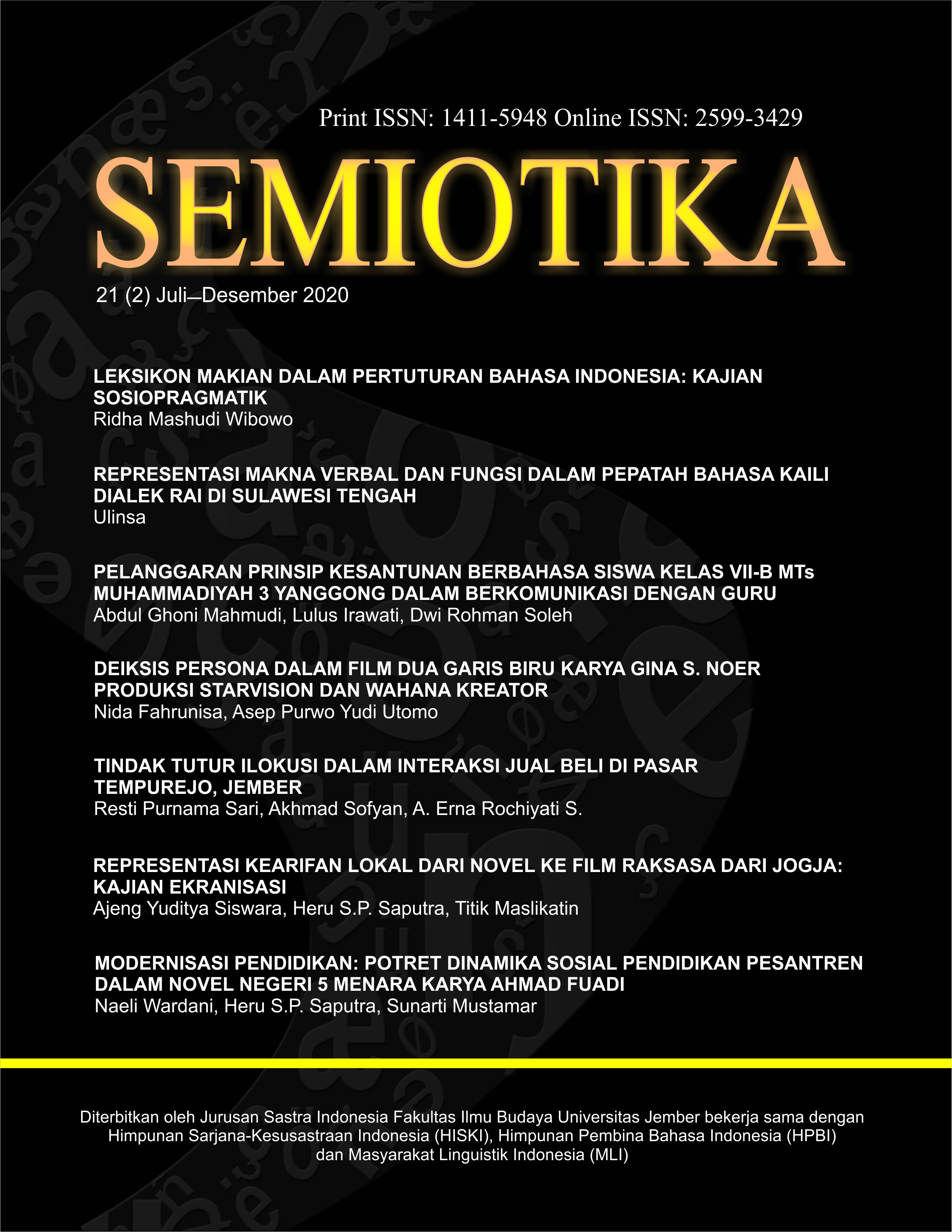DEIKSIS PERSONA DALAM FILM DUA GARIS BIRU KARYA GINA S. NOER PRODUKSI STARVISION DAN WAHANA KREATOR
DOI:
https://doi.org/10.19184/semiotika.v21i2.19763Keywords:
context, ethics, relationship, situation, statusAbstract
Person deixis can be found in various speeches, both located in everyday speech and dialogue between characters in a film, including Dua Garis Biru. This study aims to classify and analyze the kinds of person deixis and their functions in the movie Dua Garis Biru. This study used descriptive qualitative method. The data analysis in this study used a pragmatic approach. They are collecting data using the observation method with note-taking techniques. The results showed that the types of personal deixis used in the film Dua Garis Biru are single and plural form. They are singular and plural first person deixis, singular and plural second-person deixis, and third single and plural third person deixis. Each type of person deixis has a different function according to its context and reference. The singular first-person deixis is saya, aku (English: I/me),gue and gua (English:I/me in informal style),-ku (English: my). The first person deixis in the plural is kita and kami (English: we/us). The single second person deixis used in the film Dua Garis Biru is kamu (English: you), -mu (English: your), loe and lu (English: you), while the second person plural deixis is kalian (English: you). The third person deixis consists of singular third-person deixis, namely he/her or his/her, and the plural third-person deixis, namely they/their/them and everybody. The use of deixis is influenced by familiarity, age, social status, and speech situation.
Downloads
Downloads
Published
Issue
Section
License
SEMIOTIKA has CC-BY-SA or an equivalent license as the optimal license for the publication, distribution, use, and reuse of scholarly work. Authors who publish with this journal retain copyright and grant the journal right of first publication with the work simultaneously licensed under a Creative Commons Attribution-ShareAlike 4.0 International License that allows others to share the work with an acknowledgment of the work's authorship and initial publication in this journal.
Attribution-ShareAlike
CC BY-SA


